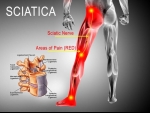Home » Blog
| Stem Cell, PRP, Acupuncture in Queens & Long Island, New York
Blog | Stem Cell, PRP, Acupuncture in Queens & Long Island, New York
Sprained Ankle: It’s a tear in the tissues (called ligaments) that hold your ankle bones together. It often happens when your foot rolls sideways. Your ankle may bruise and swell. You might not be able to put weight on it. RICE is the best way to treat it: Rest, Ice for 20 minutes at a time
Compress with an elastic bandage, Elevate your ankle -- lift it above your heart.
A light sprain will get better in a few days. If yours is worse, the doctor may suggest a short cast or walking boot, followed by physical therapy.
Read more
Pain beliefs are a major factor that affects how we experience pain. It can work both for us, and against us! The way we perceive each situation determines how we feel. Our perceptions are strongly influenced by beliefs we develop by thinking the same thoughts repeatedly. Healthy habits of thought result in more positive emotions, less stress, and less pain. Unhealthy habits of thought result in more negative emotions, more stress, and more pain.
Read more
Most people take the action of walking for granted and don’t realize that they might not be walking correctly. Sciatica occurs because a causative factor, such as a bone, disc, or muscle in your lower back impinges on your sciatic nerve roots. When you walk and stand correctly, you align your bones in a more effective way, creating a better pathway for the course of your sciatic nerve.
Read more
Eat to Beat Them - Muscle cramps happen when your muscles tense up and you can’t relax them. While painful, usually you can treat them yourself. Exercise, dehydration, and menstruation are common causes. One way to stop cramps is to stretch or massage your muscles and to eat enough of these key nutrients: potassium, sodium, calcium, and magnesium. They’re called electrolytes, and you can find them in the following foods.
Read more
Did you know it's always the brain that decides when to create pain? Let's learn how we can influence it. Being told your pain is all in your head is annoying. I used to immediately shut down when any advice sounded like they were saying my pain wasn’t real. The problem is, we perceive pain—all pain—through our mind. I was ignoring information that ended up helping me when I finally listened.
Read more
When you have back pain, your doctor may recommend muscle relaxants—a group of drugs that are typically obtained with a doctor’s prescription. These drugs have the potential to decrease tension and spasm within a sore muscle, which may reduce pain. Here are 6 important facts that you must know if you plan to take muscle relaxants for back pain: 1. Muscle Relaxants Are Typically a Second-Line Treatment for Back Pain
Read more
What’s Frozen Shoulder? It’s pain and stiffness in your shoulder that happens slowly. It can worsen until your shoulder seems “frozen” in one position. Your doctor might call it “adhesive capsulitis.” Although it may take as much as a few years to get completely better, it can improve long before then, especially if you do physical therapy to help with recovery.
Read more
If you’re dealing with persistent pain, or work with pain patients, central sensitization is a big deal. PainScience.com publisher, Paul Ingram writes: "There is great variety in acute pain, but chronic pain is often defined by pain sensitization, regardless of how it all started. And world-leading pain scientist, Professor Lorimer Moseley adds: "...fear of movement, pain catastrophizing, anxiety, and nervous system sensitization appear to be the main contributors to pain and disability."
Read more
The term sciatica refers to a set of symptoms, such as pain, tingling, numbness, or weakness that radiates along your sciatic nerve which typically courses from your lower back down to your feet. The medical term for sciatica is lumbar radiculopathy—a condition where spinal nerve roots in the lower back get irritated or compressed, sending pain and/or neurological symptoms into your lower extremities.
Read more
What Is CBD? It’s short for cannabidiol, and it’s a natural compound found in both marijuana and hemp plants. There’s some evidence that it might help treat pain, seizures, and some other health problems. But much more research is needed for doctors to know for sure what it can do.
How Do You Take It? You can take CBD oil by itself by mouth, or use one of many products that have it as an ingredient. These include pills, chewable gels, “tinctures” you drop under your tongue, vape cartridges you breathe in, creams on your skin, and foods like chocolate bars. The amount and quality of CBD in these products can be very different.
Read more
Love this Post? Spread the World






















